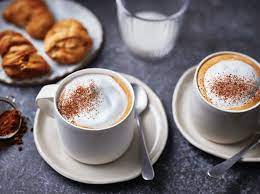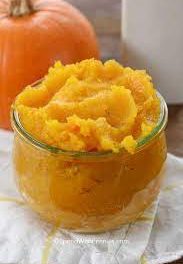Deciphering the menu at your local coffee shop can be a bit challenging.
Even for the biggest coffee connoisseur, understanding how popular drinks like cappuccinos, lattes, and macchiatos differ in terms of ingredients, caffeine content, and nutritional value can be confusing.
In this article, Pritish Halder takes a closer look at some of the key differences and similarities between cappuccinos, lattes, and macchiatos.
How they’re made

Cappuccino vs. Latte vs. Macchiato
One of the key differences between these three caffeinated beverages is how they are made.
Cappuccino
A cappuccino is a popular coffee drink that’s made by topping a shot of espresso with steamed milk and milk foam.
 Typically, it contains equal parts of each and is made up of about 1/3 espresso, 1/3 steamed milk, and 1/3 foamed milk.
Typically, it contains equal parts of each and is made up of about 1/3 espresso, 1/3 steamed milk, and 1/3 foamed milk.
This gives the final product a creamy, rich, and smooth taste and texture.
History Of The Cappuccino
Although the name was first used in Vienna, Italy can take pride in inventing the modern-style cappuccino. The espresso machine was invented in Italy in the late 19th century, and cappuccinos started popping up on café menus in the 1930s.
The original Viennese milky coffee was sweetened with cinnamon or chocolate and often decorated with whipped cream. This style of sugary cappuccino was also popular in interwar Italy – possibly because the quality of the average espresso was poor enough that it needed to be masked with extra flavorings.
After the second world war, the cappuccino was streamlined. Improved technology meant pulling a delicious espresso became easier, so the need for additional sweeteners was reduced.
Slowly, cappuccino also became popularised worldwide. In Britain, this happened in the 1950s (5), while the US warmed up to cappuccino much later, in the eighties. Nowadays, there are only a few corners of the world left where a cup of cappuccino would not be readily found.
Latte
The term “café latte” literally translates to “coffee milk.”
Although there is no standard recipe for making a latte, it generally involves adding steamed milk to a single shot of espresso.
In some cases, it’s also topped with a light layer of foam, and sugars or sweeteners may be mixed in as well.
Compared with the other beverages, lattes have a more mild, slightly sweet flavor, as they contain a greater proportion of steamed milk.
History Of The Latte
Because latte doesn’t refer to one specific recipe, it’s hard to pinpoint who actually invented it. Milk coffee became popular across Europe over the late 19th and early 20th centuries, with regional variations such as Germany’s Milchkaffee and France’s café au lait, made by pouring heated milk and strong coffee out of two separate pitchers, mixed to the coffee drinker’s preference.
In the English-speaking world, the word latte came to be widely used – paradoxically, because the latte is not really a part of Italian café culture. A common recipe for making it evolved, including espresso, sweeteners and steamed milk.
In an average espresso bar in Italy, you can order a macchiato or cappuccino, but the caffè latte is seen as a breakfast drink to be made at home instead.
Macchiato
Traditionally, the macchiato is made by combining a shot of espresso with a small splash of milk.
 However, many other variations are available, including the latte macchiato, which is made by adding a shot of espresso to a glass of hot milk.
However, many other variations are available, including the latte macchiato, which is made by adding a shot of espresso to a glass of hot milk.
Because the macchiato is usually made using just a small amount of milk, it has a much stronger flavor than other coffee drinks.
It’s also much smaller than other drinks, with a standard serving clocking in at just 1 1/4 ounces (37 ml).
Variations Of The Macchiato
Today, however, many of the coffee drinks called “macchiato” do not have much to do with the original recipe. Starbucks offers a “zebra macchiato” or an iced “marble mocha macchiato” with white mocha on the bottom and an espresso shot on the top. While this might delight those with a sweet tooth, it’s far from a traditional espresso macchiato.
Caffeine contents
All three beverages contain similar amounts of caffeine per serving.
Cappuccinos and lattes, for example, are each made using a shot of espresso and thus contain the same amount of caffeine.
In fact, a medium 16-ounce (475-ml) cappuccino and medium 16-ounce (475-ml) latte each contain about 173 mg of caffeine. Meanwhile, a 2-ounce (60-ml) macchiato has about half as much caffeine, with just over 85 mg per serving.
Nutritional value
Cappuccinos, macchiatos, and lattes contain varying amounts of milk and foam, which can alter their respective nutritional profiles quite a bit. Their nutrient contents are further influenced by the type of milk used, as well as if any sugar or sweeteners are added.
Lattes contain the most milk and are the highest in calories, fat, and protein.
Cappuccinos contain a bit less milk, but still provide a good amount of calories, protein, and fat in each serving.
On the other hand, macchiatos contain only a splash of milk and are significantly lower in calories, fat, and protein.
Here’s a comparison of the three drinks:
| Type of drink | Calories | Protein | Total fat | Carbs |
| 16-ounce (475-ml) latte | 206 | 13 grams | 8 grams | 20.5 grams |
| 16-ounce (475-ml) cappuccino | 130 | 8 grams | 5 grams | 13 grams |
| 2-ounce (60-ml) macchiato | 13 | 0.7 grams | 0.5 grams | 1.6 grams |
Conclusion
Cappuccinos, lattes, and macchiatos are all made differently, which gives them their own unique taste and texture.
Because they each contain a different set of ingredients, they also vary in terms of caffeine content and nutritional value.
Therefore, whichever drink you decide to order on your next trip to the coffee shop all comes down to your personal taste and preferences.
Reference
https://www.healthline.com/nutrition/cappuccino-vs-latte-vs-macchiato
https://www.homegrounds.co/cappuccino-vs-latte-vs-macchiato/










